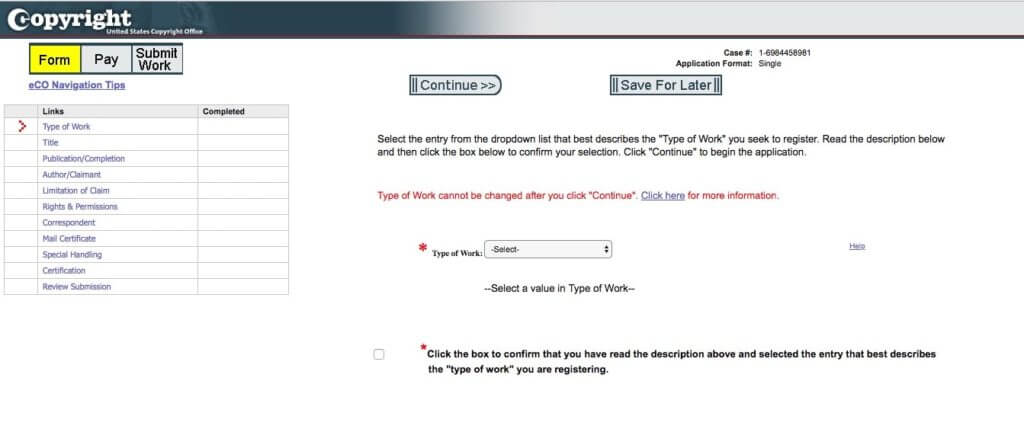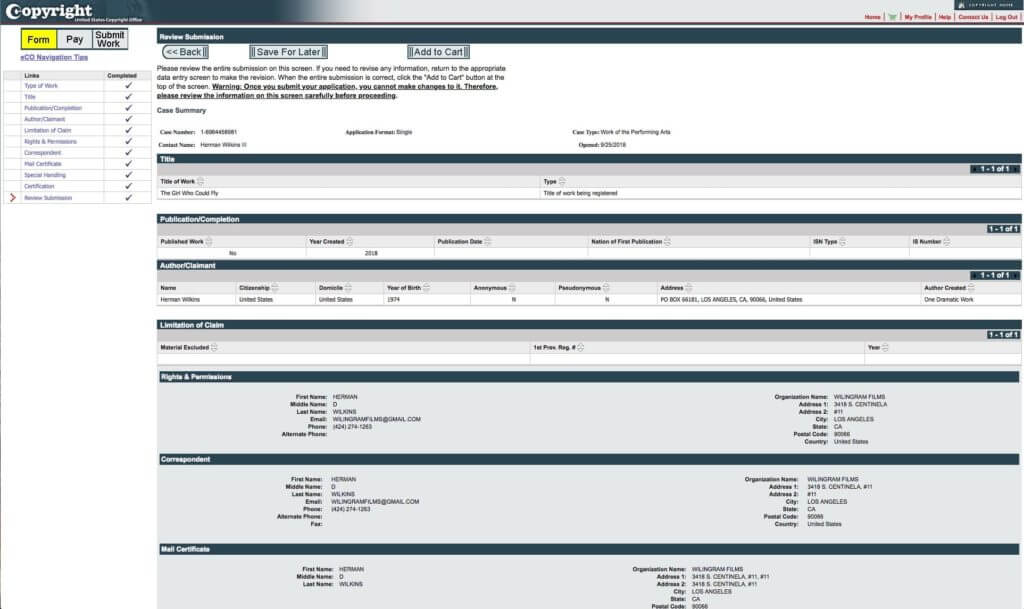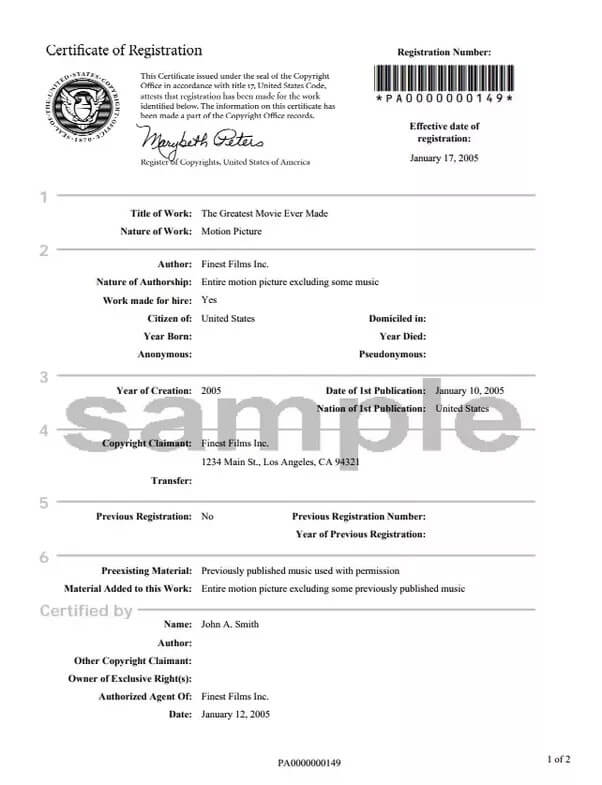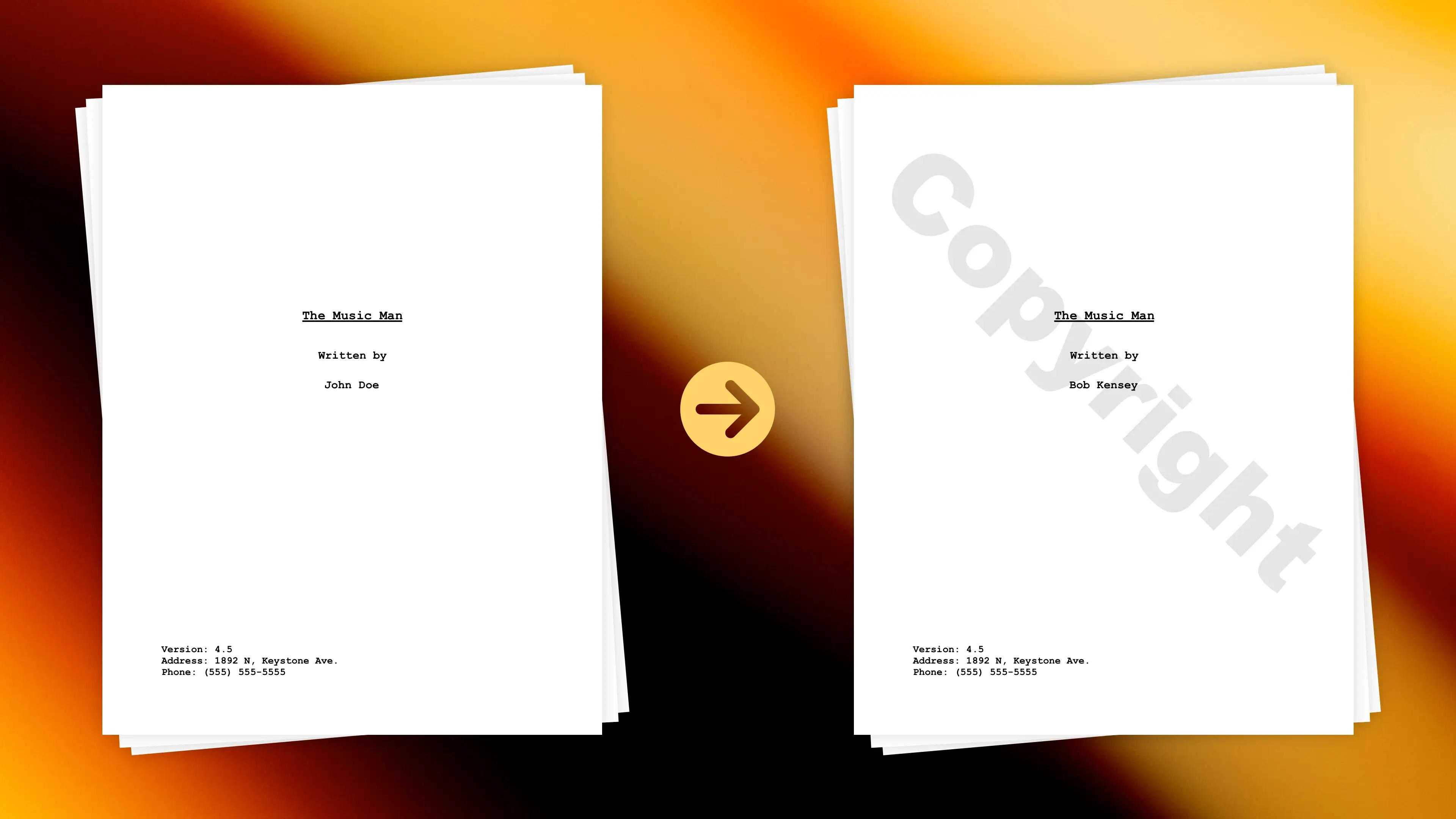You’ve finished the greatest story ever told. Now how do you protect your screenplay? It’s a good idea to learn how to copyright a script because, as a writer, the last thing you need is a legal battle. While Final Draft provides a link to WGA script registration, you might want to take it a step further to protect your work.
Today, we’ll discuss the most ironclad way to protect your script. We’ll tell you how to copyright a script to establish a record of ownership and give you recourse should you ever become a victim of theft.
Hammering out the legal aspects the first step in selling your script.
Do you want credit? Copyright your script.
But first things first …
COPYRIGHT SCREENPLAY DEFINITION
What is a copyright?
A copyright is the proprietary entitlement to reproduce, publish, distribute, or sell any work created to be classified as an intellectual property.
In the United States, the Library of Congress manages copyrights. Some examples of works that can be copyrighted are songs, poems, plays, scripts, and audio-visual performances.
SHOULD I COPYRIGHT MY SCREENPLAY?
1. Decide whether you should copyright your script
If you're like most writers, once you type the words The End or Fade To Black, you get a much-deserved feeling of accomplishment.
But the work is not done yet. You need to ensure your script stays protected.
Many screenwriters protect themselves by going through the WGA script registration service.
But remember, submitting to the WGA Registryis not the same thing as copyrighting your screenplay.

Wondering how to copyright a movie idea? For some, it starts here.
Even though many of the best screenwriting software apps provide a direct link to the WGA script registration page, truth is the WGA only establishes a date of creation ... and nothing else.
Yes, this might be the only protection you need. It's certainly better than nothing.
But remember, a writer needs more than just a WGA script registration to establish ownership in a court of law.
That’s why the first question isn’t "how to copyright a script," rather, "is the WGA script registration process sufficient?"
Here are three good reasons why you should go beyond and copyright your screenplay:
- First, you cannot contest ownership without a copyright.
- Second, you cannot receive statutory damages if a copyright is filed after you file a lawsuit.
- Third, within five years of publication the copyright is proof of ownership by date.
WGA script registration offers none of these guarantees.
Also, to sell your script you will need the official chain of title.
chain of title Definition
what is a chain of title?
A chain of title is a listed particular order of transfers of an intellectual property.
Copyrighting your script is the best way to establish a chain of title.
And the decision to copyright should be a matter of when, not if.
If you are not submitting to anyone, then a WGA script registration might be fine. Also, consider doing the “poor man’s copyright."
To do the “poor man’s copyright,” just mail the entire screenplay to yourself.
When you receive it back in the mail, don't open it.
That said, if you are ready to sell, then it is time to officially copyright your screenplay. Sharing your work, putting it out there, sending it to agents, managers, producers, friends, relatives, strangers — it's daunting. A copyright gives you the confidence that you're protected.
Related Posts
- Read More: The Best Screenwriting Websites →
- Read More: Screenwriting Software Guide →
- Read More: How to Write Better Dialogue →
HOW TO COPYRIGHT A SCRIPT
2. How to copyright a screenplay
Don’t worry, learning how to copyright a script is easy. The first step is to head to the Library of Congress E-Copyright Office website.

First, you will go to the “Register a Work” tab.
You will want to register your script as a work of Performing Arts and NOT as a motion picture. This only happens after your script is filmed. (We'll get there.)
Then, provide the information required on the application form. Some of these include:
- Title of Work
- Year of Completion
- Name(s) of Author(s)
Like we said, learning how to copyright a script is easy, but there are more than a few steps to complete the process.
So don’t forget to save as you go in case you have to stop and come back later.
This is what your copyright application will look like.


Related Posts
- Read More: The Best Screenwriting Books →
- Read More: How to Write a Treatment [Free Template] →
- Read More: Develop Short Film Ideas You Can Make →
HOW TO COPYRIGHT A SCREENPLAY
3. Pay the fees to copyright your screenplay
After you’ve reviewed your submission details it’s time to pay for the service. You will be taken away from the Library of Congress site for this step.
Fill in the information regarding your payment. The fee is $35. This is only $15 more than WGA script registration and provides much more security. A small price to pay to have guaranteed ownership of your work.
Upload the deposit electronically and create a shipping slip for it. Generating the slip is not mandatory, but it gives you a digital receipt of your registration.
COPYRIGHT FILING
WHO HANDLES COPYRIGHT FILING?
Companies like LegalZoom will handle copyright filing fees for you, but at nearly triple the cost. You don’t save money or time, as they will ask the same questions.
You will want your digital receipt on hand, as you will likely be waiting for your certification to arrive in the mail.
HOW TO COPYRIGHT A SCRIPT
4. Wait for your copyright certificate to arrive
Be prepared, it takes a while receive.
In fact, it can take up to 16 months for the Library of Congress to get back to you regarding the web-submitted copyright for your script.
This is all clearly laid out on their website.
Yes, 16 months seems like a long time to copyright a screenplay. But don’t worry. The claim of copyright is established the moment the payment goes through.
This means that even though you won’t see the actual documentation for quite some time, your script is definitely yours.
While you wait, keep writing.
Looking for a free, professional screenwriting program you can use right now, no strings attached? This is the option for you. Just sign up (5 seconds) and start writing your screenplay.
Screenwriting software - the recipe for success
StudioBinder screenwriting software is one component of the full StudioBinder suite of features. StudioBinder is an end-to-end production management platform, so if you want to write a script and move into preproduction and production, you'll have that option as well.
With a few clicks, you can use your screenplay to auto-generate shooting schedules, shot lists, storyboards, and call sheets. Build and manage production documents, share anything with your team, let collaborators comment and edit, and maintain all your contacts in the software.
HOW TO COPYRIGHT A SCREENPLAY
5. Receive the copyright for your script
When you go to the mailbox, months after you have completed the steps in our how to copyright a screenplay guide, there will be an envelope.
You can open it and revel in the fact that the United States Library of Congress has officially recognized the material you submitted as your own.

Script copyright example
Congratulations. Your script is copyrighted!
UP NEXT
How to write an irresistible logline
Now that you know how to copyright a screenplay, your next question might be what to do with your copyrighted screenplay. The answer is simple.
Sell it.
Of course, easier said than done. To do this you will need to package your script with a compelling logline. Read our next post on how to craft a logline producers and agents can't refuse.

